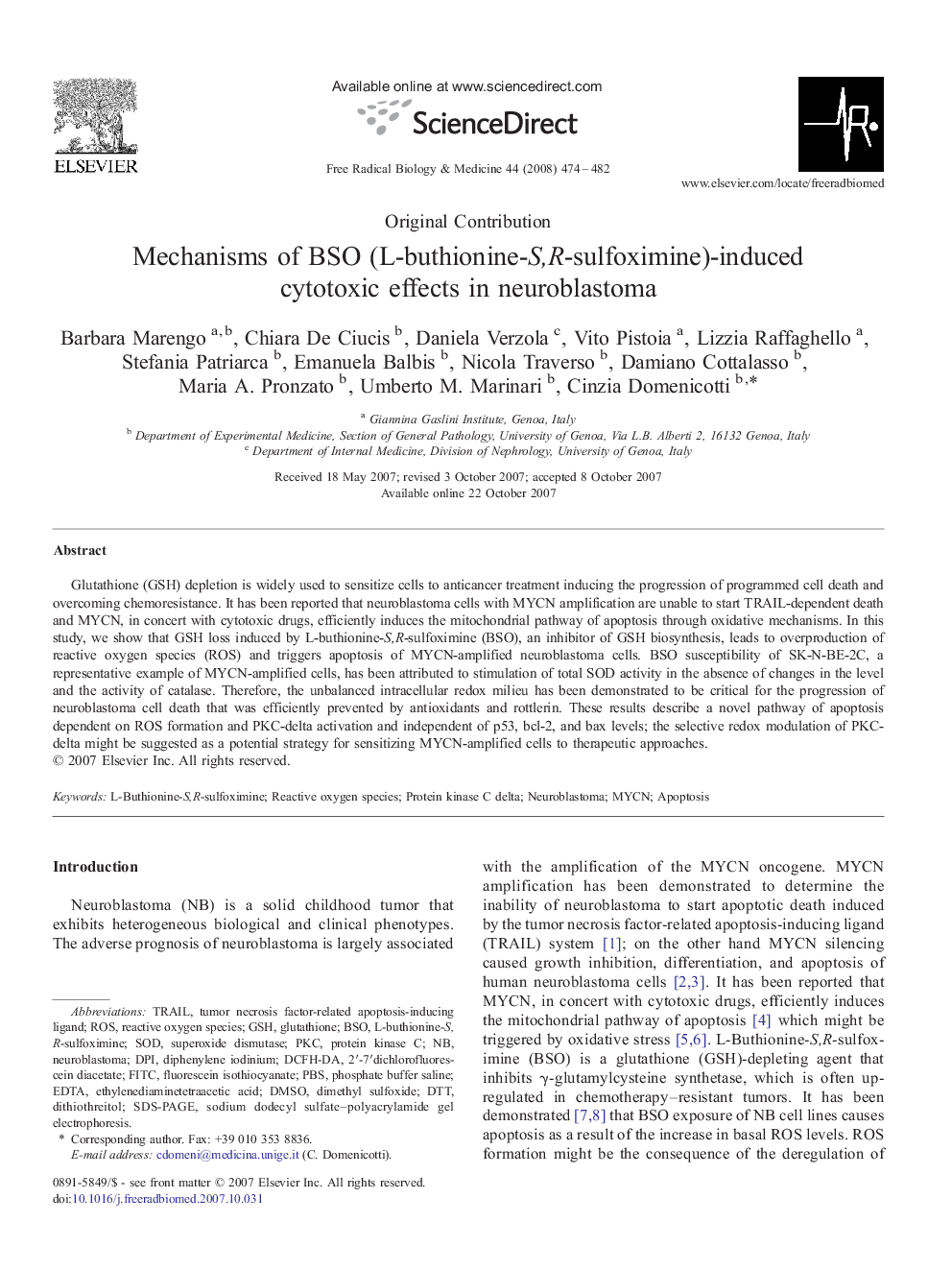| کد مقاله | کد نشریه | سال انتشار | مقاله انگلیسی | نسخه تمام متن |
|---|---|---|---|---|
| 1911125 | 1046802 | 2008 | 9 صفحه PDF | دانلود رایگان |

Glutathione (GSH) depletion is widely used to sensitize cells to anticancer treatment inducing the progression of programmed cell death and overcoming chemoresistance. It has been reported that neuroblastoma cells with MYCN amplification are unable to start TRAIL-dependent death and MYCN, in concert with cytotoxic drugs, efficiently induces the mitochondrial pathway of apoptosis through oxidative mechanisms. In this study, we show that GSH loss induced by L-buthionine-S,R-sulfoximine (BSO), an inhibitor of GSH biosynthesis, leads to overproduction of reactive oxygen species (ROS) and triggers apoptosis of MYCN-amplified neuroblastoma cells. BSO susceptibility of SK-N-BE-2C, a representative example of MYCN-amplified cells, has been attributed to stimulation of total SOD activity in the absence of changes in the level and the activity of catalase. Therefore, the unbalanced intracellular redox milieu has been demonstrated to be critical for the progression of neuroblastoma cell death that was efficiently prevented by antioxidants and rottlerin. These results describe a novel pathway of apoptosis dependent on ROS formation and PKC-delta activation and independent of p53, bcl-2, and bax levels; the selective redox modulation of PKC-delta might be suggested as a potential strategy for sensitizing MYCN-amplified cells to therapeutic approaches.
Journal: Free Radical Biology and Medicine - Volume 44, Issue 3, 1 February 2008, Pages 474–482